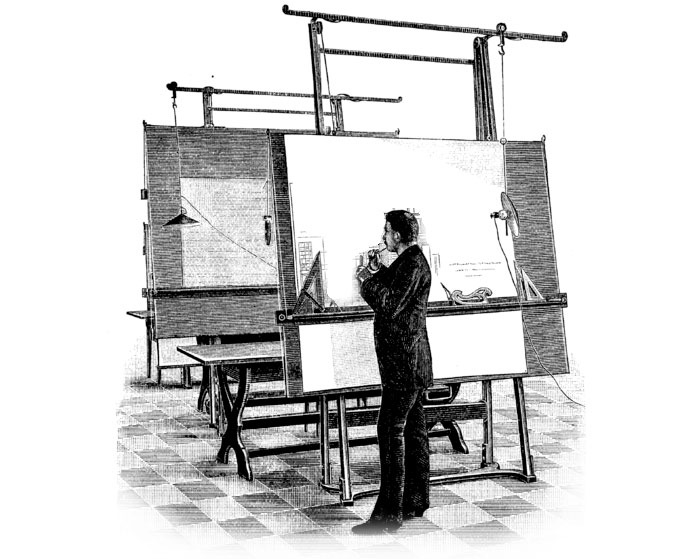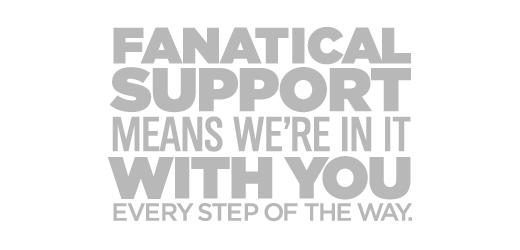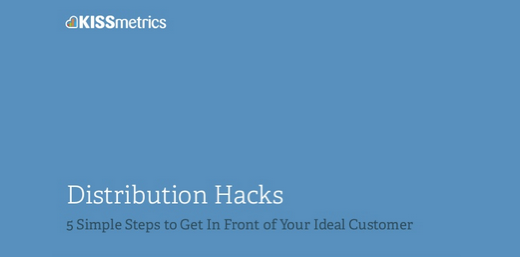It seems like everyone is creating free software right now. This trend is only continuing to grow as time goes on.
I understand. In fact, I’ve done it myself — several times. Free SaaS turns companies into traffic-generating machines. But it also does something to the not-so-free SaaS providers. It makes them worried — with good cause — that no one is going to spend money on their service.
Look at it from a practical point of view. Which would you rather do — pay for software or get it for free? It’s kind of a stupid question, but it brings up an important point: What should a paid SaaS providers do in an age of free SaaS?
Restrategize.

The simplest answer is kind of a non-answer: You’ve got to restrategize.
Free software is a trend right now, and it’s not going away. (In fact, it’s getting bigger.) You can either adapt to the shift or risk getting marginalized. The fact is, few people are willing to pay something that they can get for free somewhere else.
When you start restrategizing, you’ve got to think way outside the box. Making superficial tweaks to your existing SaaS or providing discounts to your current customers probably won’t keep you afloat for the long haul.
I’ve jotted down a few forward-thinking ideas in this post, but I challenge you to come up with your own set of strategies to succeed in your niche.
Remarket.
The most direct way to respond to the crisis in free SaaS is to do a teardown and build-up of your existing marketing methodology.
I made the blanket statement above that “no one is going to pay for something that they can get for free somewhere else.” Now, I want to clarify that statement.
If your target audience doesn’t know about free SaaS or is skeptical of free SaaS, then they will pay for your service. Find customers who pay — those who are unaware that free versions exist. It all depends on the target audience. Some markets are more amenable to paid services than others.
We highly recommend watching our webinar with Lincoln Murphy: Distribution Hacks – 5 Simple Steps to Get In Front of Your Ideal Customer
The alternative approach is to create a marketing strategy that establishes the superiority and/or security of a paid service. Find your customer’s pain points. Then market directly to those needs, promising the very thing that they’re craving.
Make your SaaS better than anything else available.
You’ve heard the saying, “Build a better mousetrap, and the world will beat a path to your door.”
This principle holds true in SaaS development. If you have a better product, people will be willing to pony up the extra cash.
Development is, of course, very expensive. You may have the advantage of an existing paying customer base. Yet at the same time, you must compete with free SaaS providers who often have deep investment pockets or some other form of funding.
Provide something that the free service can’t or won’t.
The biggest thing that a free SaaS provider has going for them is that their product is free.
That, of course, is a huge selling point, but it’s not the only selling point. There are other features of a SaaS that are compelling, rather than just the price point. Determine what your single most valuable perk is, and promote it.
Here are some examples:
Guarantees
You can’t really guarantee something that’s free. If you have a paid service, then you can increase the value of a guarantee for your customers. Such guarantees may cover issues like data loss, downtimes, etc.
Consultation
Some customers may want more than your software. They may also want your no-strings-attached advice. You don’t have to provide a sales gimmick where a 30 minute “consultation” call turns into a full-fledged hard sell. They’re already a customer! You simply provide some free consultation.
Providing consultation has an extra benefit. You get to establish a relationship with the customer that goes beyond surface level acquaintances.
Give your prospects the royal treatment.

Rackspace has centered its brand around “fanatical support”.
If you’re selling software, then you’ve given a lot of thought to the conversion funnel.
There is one aspect of the funnel, that some marketers don’t think about enough — lead nurturing.
Notice I said lead nurturing, and not lead generation. There’s a difference! “Lead generation” sounds more like assembly line production, whereas lead nurturing is about giving your potential customers specific, individualized, and careful attention.
Marketers who engage in lead nurturing experience 50% more leads and 33% lower customer acquisition costs. The whole idea behind lead nurturing isn’t that complicated. It’s simply about giving your prospects and existing customers the royal treatment.
Focus on your existing customers.
Your most profitable group of customers are your existing customers. Existing customers produce 75% or more of your revenue. They are your greatest source of value.
Rather than throwing all your effort into gaining new customers (and trying to peel them away from free services), focus on cultivating and caring for your existing customers.
The Pareto Principle or 80/20 rule says that 80% of your results come from 20% of your efforts. In productivity, it means that 20% of your time creates 80% of your results. In marketing, it suggests that 20% of your customers represent 80% of your sales.
The Pareto guru, Perry Marshall, wrote this:
If you have 1,000 customers, 80% of your business comes from 200 of them. But if we ignore the bottom 800 and just look at the 200 best ones, 80/20 is still true of the ones that are left. 80% of your business will come from 20% of the 200, which is 40.
With just a few minutes of digging into your numbers, you can figure out your most profitable slice of customers. It might be just a handful — 40, 20, or even fewer.
Since these are your most valuable customers then you should expend more of your time and effort giving them what they need.
Provide them with perks.
Your loyal customers deserve the best you can give them. What can you give them? A free upgrade? More storage? Tickets to a local event? Free catered lunch for their office? Think about it, then deliver.
If you spend a few hundred dollars to reward and give back to a loyal customer, you can earn their respect and continued relationship for a long time.
Personally contact them.
The most powerful form of customer relationship is customer contact. Think of a way that you can stay in touch with your loyal customers on a regular basis. Phone calls from sales representatives or client managers are great, but do what you can to let someone in leadership talk to the customer — the founder, president, or owner.
Listen to them.
Most importantly, listen and respond to what they have to say. If you go to the effort of reaching out to them, then go to the next logical level of responding to their concerns. Just contacting them isn’t going to do anything if you don’t do anything about it after you hang up the phone.
Conclusion
Paid SaaS is not going away. Just because there is a proliferation of free services does not mean that all other SaaS will shrivel and die. The industry is changing, however, and forward-thinking SaaS providers will need to adapt. What is your best adaptation strategy?
What ideas do you have for staying profitable in an age of free SaaS?
About the Author: Neil Patel is a lifelong evangelist of KISSmetrics and blogs at Quick Sprout.

No comments:
Post a Comment